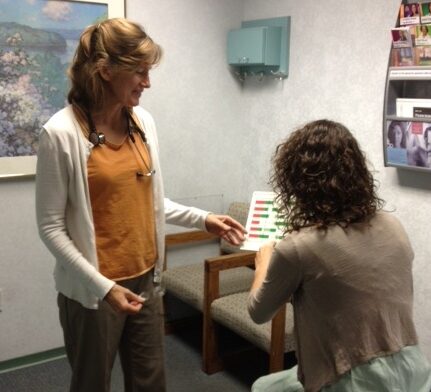- Medical Matters
Teens and Fertility Charting
by Gretchen Marsh, D.O.
Spring 2022
I am a strong advocate of teaching teenage girls how to chart their fertility in a medically significant way with evidenced based, teacher taught fertility awareness methods such as Creighton model FertilityCare System, Billings Ovulation Method, etc. I have several reasons for this.
First, many reproductive diseases such as polycystic ovarian disease or endometriosis begin in adolescence and unfortunately most teens are prescribed chemical contraceptives such as birth control pills or the depo provera shots. Very little workup is done and no diagnosis is made. Years later these same young women are now married and wondering why after ten+ years of the contraceptives, they are struggling to conceive. And the same symptoms are now reappearing. The diseases were masked but not treated. When I asked one of my 16 year old patients what she thought of the birth control pills she was offered by a previous physician, she responded “Well, like that was going to do anything!”. She instinctively knew that the pill was not going to treat the underlying disease.
Additionally, most teen girls with a smart phone are already using some sort of charting app, many of which are not very accurate (see FACTSaboutfertility.org). While all methods have an app and basic charting is a good first step, these very basic apps result, in my experience, in a lot of confusion about reproductive health.
Lastly, teacher-taught methods foster a positive relationship between mother and daughter and promote accurate education of reproductive physiology. When teaching teens to chart, I always have mother or adult female relative present, and many times, mother states how she wishes she had this education when she was her daughter’s age. Mother, as it turns out, suffered many of the same symptoms as daughter. There is usually a palpable new found respect by daughter for mother when this information is revealed.
With charting, an accurate targeted hormone profile can be obtained so an accurate “snapshot” of the teen’s physiology is taken. For instance, a 16 year old presented with irregular menstrual bleeding as shown in her Creighton model chart. By having her go to the lab at specific times based on her charting, we found that she was developing PCOS. Additionally like most people with this condition, she suffered with PMS (premenstrual syndrome) which is a condition of low progesterone. This is a serious disease because of the association with miscarriage, post-partum depression, and premenstrual dysphoric disorder in addition to the highly disruptive effects on relationships and health. Among other treatments, replacing progesterone at the correct time of the cycle will help to normalize progesterone levels, greatly improving PMS, reduce uterine cancer risk, reduce future miscarriage risk, etc.
Teaching teens to chart their menstrual cycles offers many benefits such as accurate education, improved health, healthy self -respect, enhanced relationships, and stable families.
About The Author




